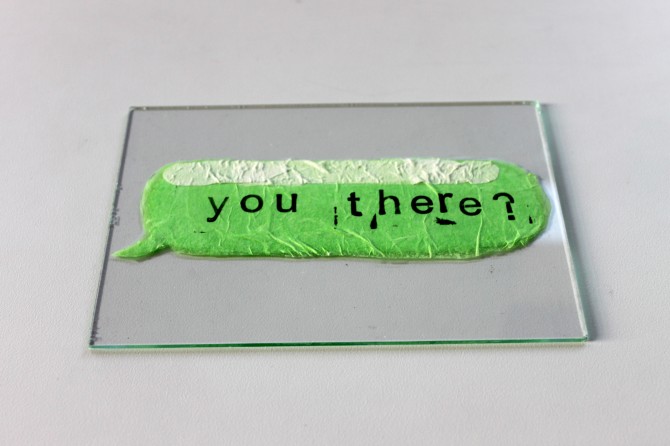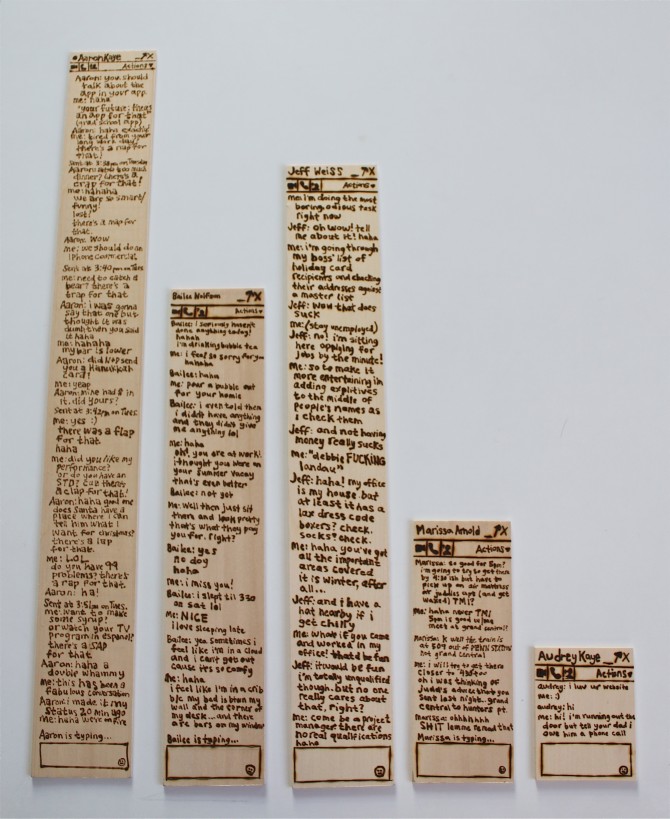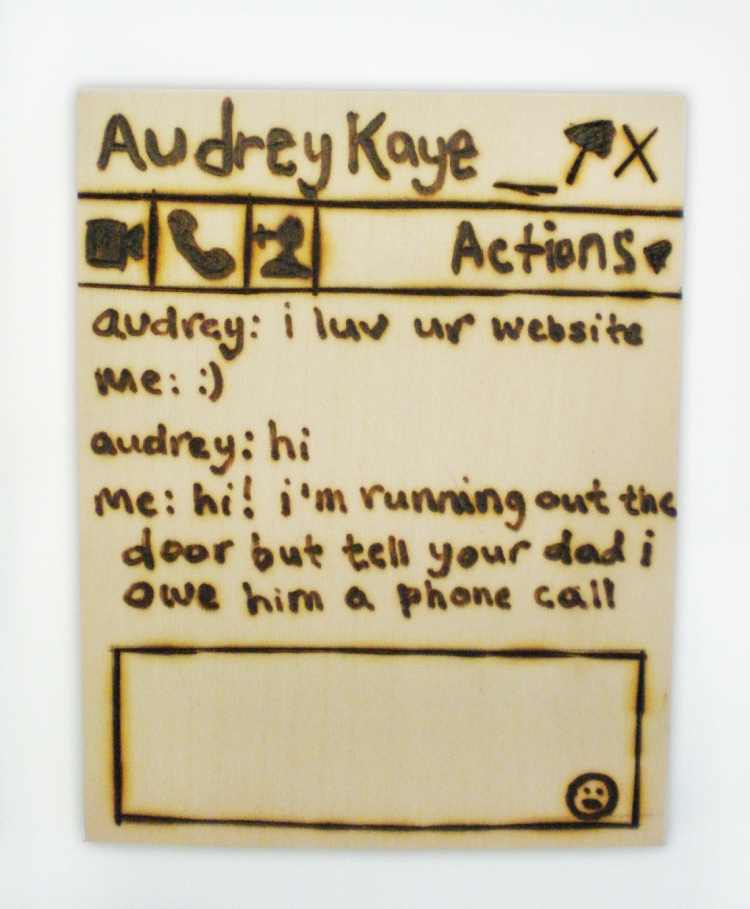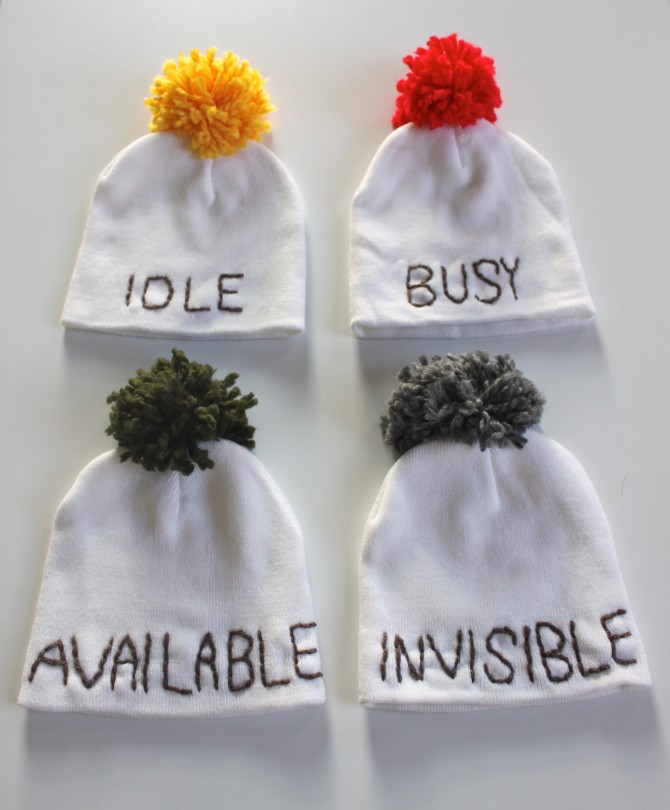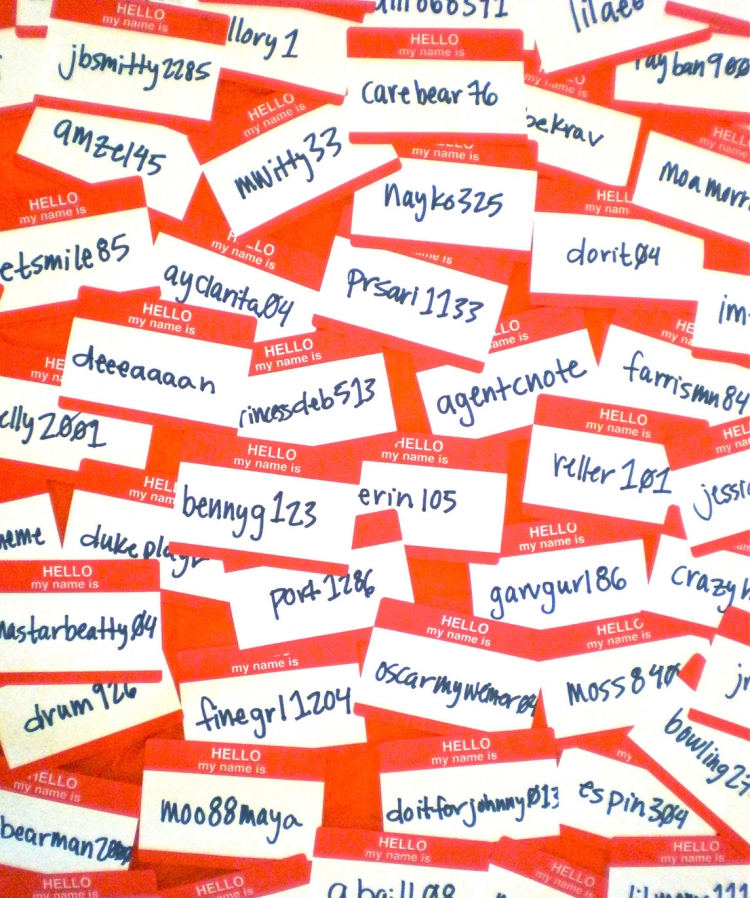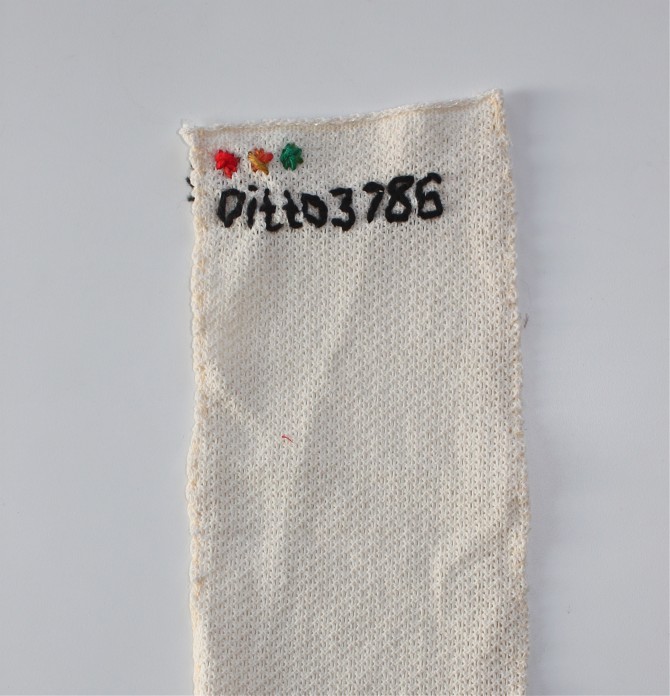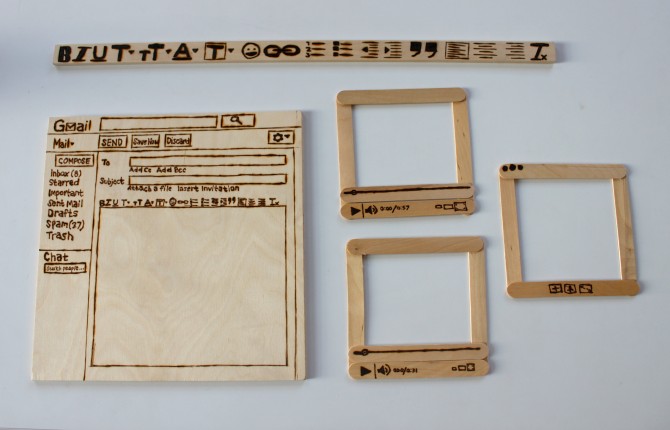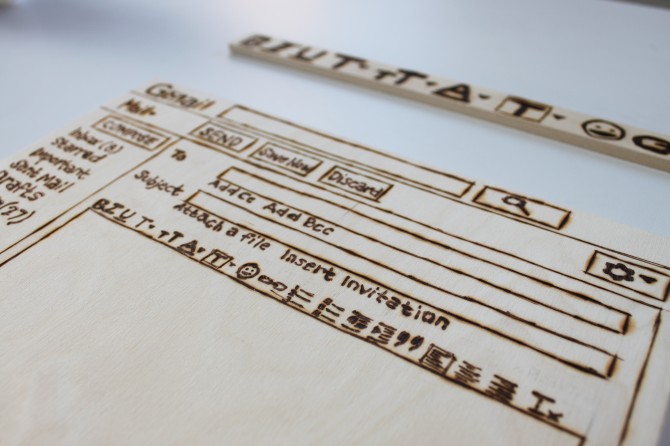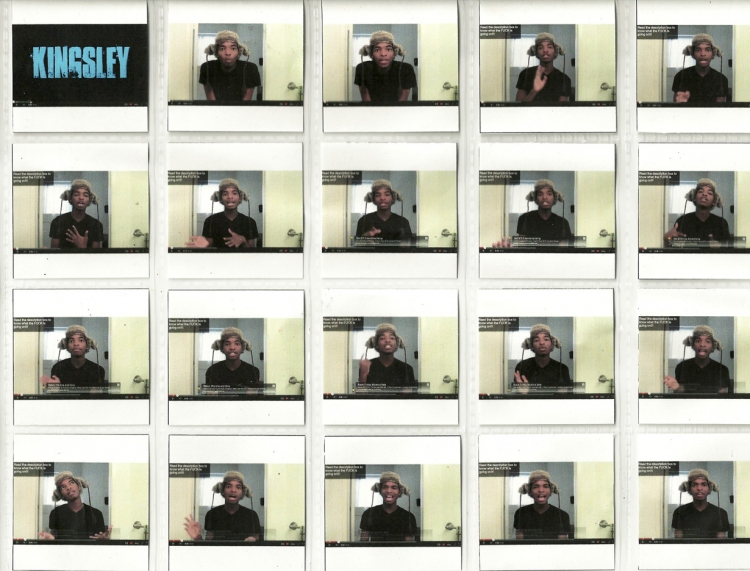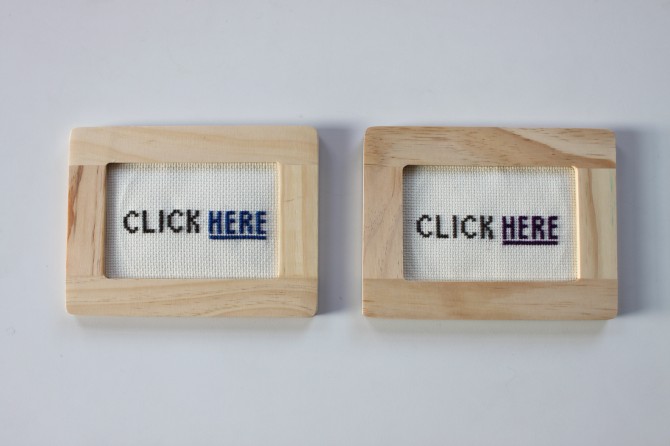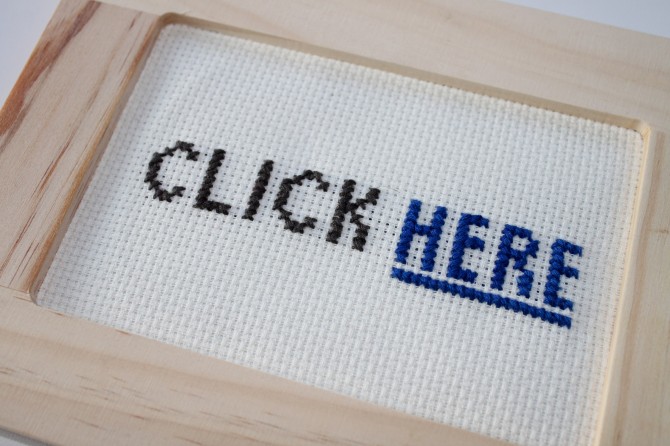For my final Major Studio project I conducted a series of small explorations of internet content, language, and culture. I wanted to make work that broke out of the “best practices” I had honed as a professional web designer and challenge myself to re-envision web elements that have become so familiar to me.
To accomplish this, I felt that I needed a shock to my system. I decided to do the bulk of my work off the computer and use physical materials. This really helped erode some of the habits I’ve developed as a digital designer. I was able to focus on the concepts and their relation to the materials I was using. It also forced me to iterate on ideas differently than I normally do.
Another reason I wanted to work with my hands was to tie my projects to the folk art movement. In many ways, the internet is today’s craft medium of choice. Anyone with a computer and a little patience can put up a website. Even in the interactive design industry, many people are self-taught practitioners. There are also a lot of hand-crafted products being sold online through sites like Etsy. I think there are some interesting parallels and contradictions here, especially in the relation of “women’s work” to the male-dominated tech industry.
This piece is about the language of chat and the perception of instant-message content. We scrutinize written messages to a far greater extent that we do spoken conversations. We over-analyze the verbiage, punctuation, and delivery in an attempt to understand the intended tone. This chat bubble on a “slide” is a specimen for such examination.
The content of online chat ranges from flippant, casual conversation to serious discussion and even arguments. These pieces ask the viewer to reconsider how they would chat if they had to painstakingly burn each letter into wood. It asks whether removing a recorded conversation from cyberspace in this fashion makes the conversation seem more serious, ridiculous, or memorable.
Don’t you ever wish you could tell people to “piss off” in the same socially acceptable manner as you can with an away messages? I brought the concept of away messages into the physical world with “gChats.” Now everyone around you can know whether you’re available to be bothered.
When I was in middle school and high school the most popular way to communicate with friends was through AOL Instant Messenger. Setting up a screen name was our first attempt at creating our online identities. I recently opened up my buddy list and challenged myself to match as many screen names to their owners as I could remember. Surprisingly, I was able to identify over 100 of my friends; some of whom I haven’t spoken with in years.
This is an unfinished “sketch.” I considered making a giant stitched buddy list as an ode to our past online identities.
These pieces are experiments in turning common web interfaces into tangible craft objects. I used scale to make the objects seem even more non-nonsensical.
With this piece I use scale, materials, and context to affect how people react to the suggestion that something is loading. What, exactly is loading? Obviously, the progress bar will never change… How much more/less time would someone sit and watch this message than if they were watching it on a computer screen?
This set of “slides” is a deconstruction of a YouTube video. How does placing screen shots of a home-brew video recording in protective plastic sheeting change our interpretation of the content’s value and accessibility?
With this piece I drew an aesthetic relationship between the stitch and the pixel. I also made a classic web-content faux pas: links should be action words that tell people where they’ll be going. “Click here” is never a smart way to invite interaction.
These static links can never be click on, but it looks like someone already visited one of them… how the hell did they do that?





